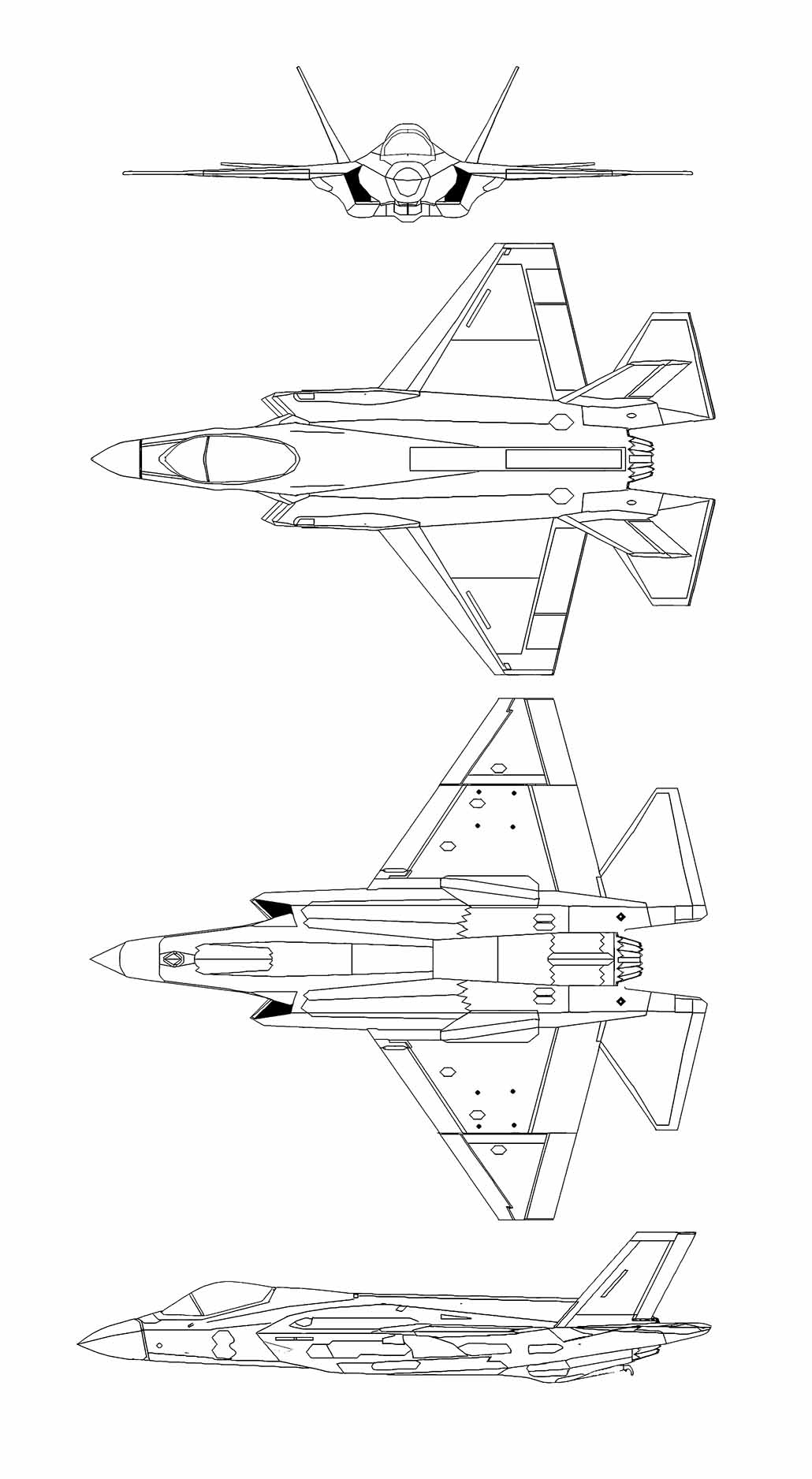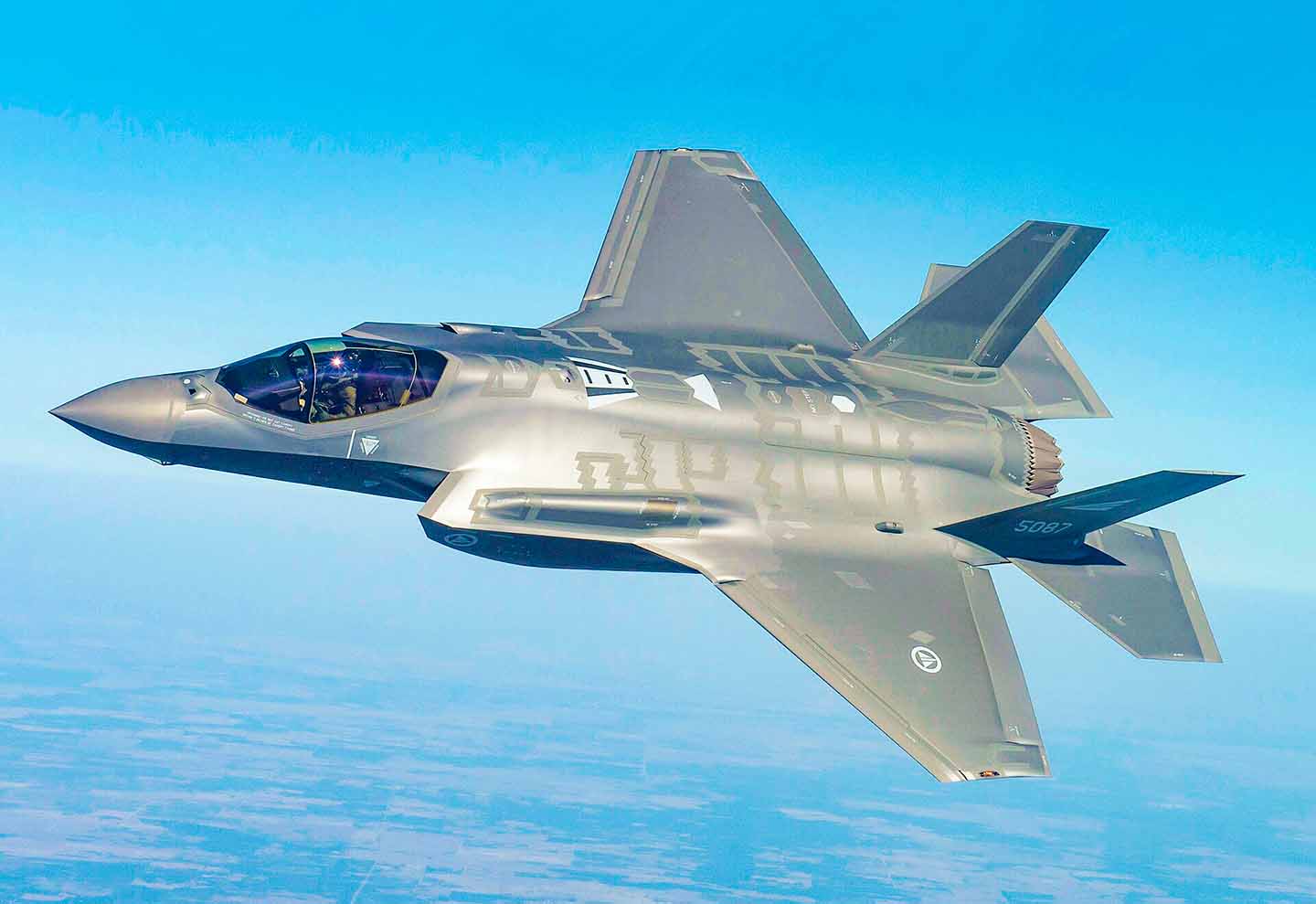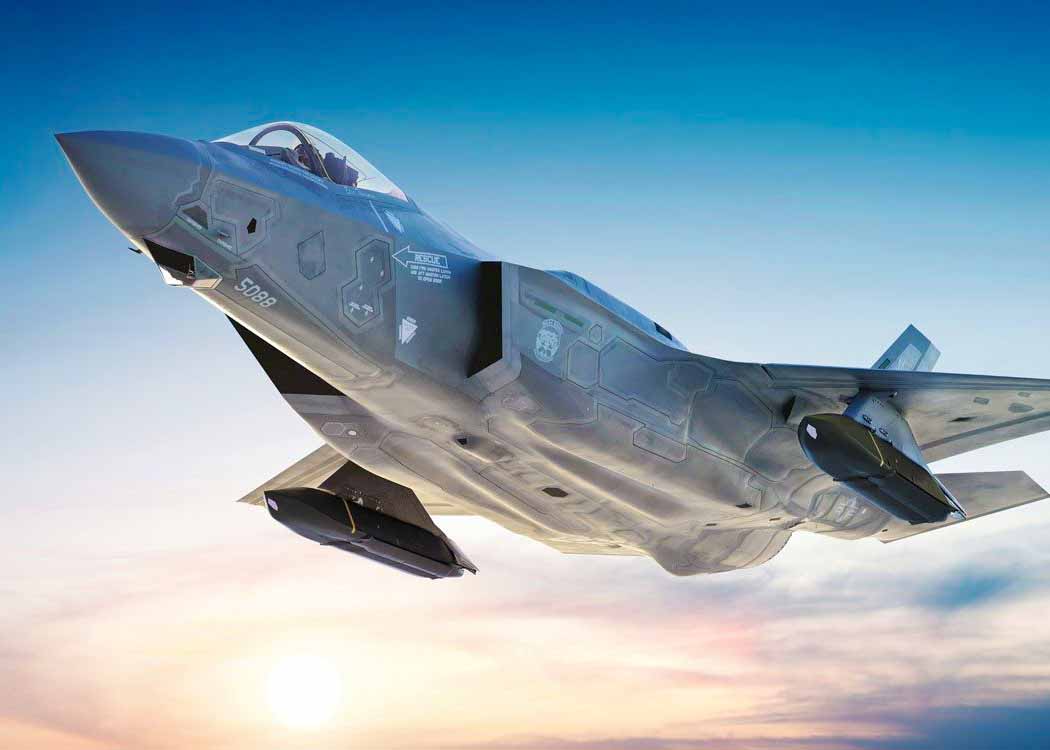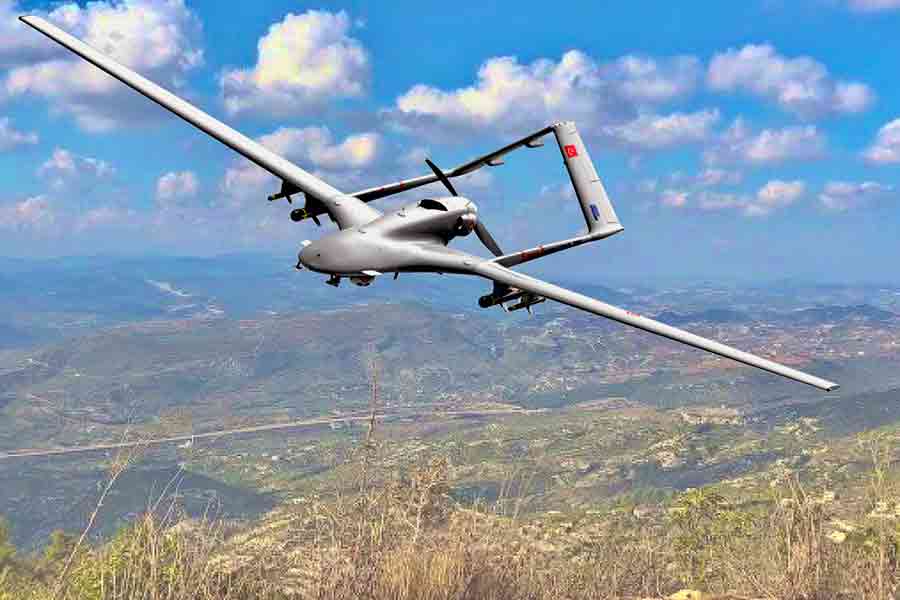On August 28, 2024, a ceremony took place in Fort Worth, Texas, which went down in history as the Polish Air Force. Poland officially received its first F-35A "Husarz" (Winged Cavalryman) fighter, an important step towards modernization and increasing the country's defense capabilities. This purchase is part of a broader modernization program aimed at increasing Poland's combat potential in the face of changing threats in the region.
F-35 Purchase Background
Poland’s decision to purchase the F-35 was made in 2020 as part of a broader military modernization program. In the face of growing tensions on NATO’s eastern flank, especially after Russia’s annexation of Crimea in 2014 and the outbreak of war in Ukraine in 2022, Poland has begun to invest heavily in its armed forces. The purchase of the F-35 is one of the most important — and most expensive — investments in this program.

F-35A Lightning II of the 58th Fighter Squadron USAF (Source: Wikipedia)
The Polish government has signed a $4.6 billion deal to purchase 32 F-35A Lightning II Block 4 fighters, which will be delivered in batches by 2030. In addition to the planes, the deal also includes 33 Pratt & Whitney F135 engines, pilot training and logistical support.
Why F-35?
The F-35, manufactured by the American company Lockheed Martin, is one of the most advanced fifth-generation combat aircraft. Its advanced technologies, including the ability to operate in stealth mode, make it undetectable by most air defense systems. This is crucial in modern conflicts, where the ability to avoid detection can decide the outcome of the fight.
One of the main reasons for Poland’s choice of the F-35 was its versatility. The aircraft can perform various combat roles, including air-to-air strike, air-to-ground, and reconnaissance and support. Additionally, the F-35 is fully integrated with NATO systems, which increases the interoperability of the Polish Air Force with allied armed forces.
According to the manufacturer, the F-35 currently operates from 32 bases around the world. To date, Lockheed Martin has delivered more than 1,000 F-35s, trained more than 2,540 pilots and 16,690 mechanics, and the F-35 fleet has exceeded 889,000 cumulative flight hours.
F-35 Technical Specifications
The F-35 is a multi-role aircraft that combines the most modern technologies available on the market. It has an advanced stealth system that allows it to conduct operations without being detected by radar. The aircraft is equipped with modern communication systems and sensors that allow it to exchange information with other units on the battlefield.
One of the most important features of the F-35 is its ability to fully integrate with other NATO combat systems. This means that Polish F-35s will be able to cooperate with aircraft and defense systems of other NATO member states, which increases the potential of allied combat operations.

Schematic drawing of the F-35 aircraft (Source: Wikipedia)
The F-35 is the first military aircraft in history designed entirely digitally, without a single 2-D engineering drawing. In order to reduce the aircraft's weight while maintaining the same strength, it is made mostly of composites, without a single sheet of metal.
Thanks to its stealth technology, the F-35 is difficult for radar to detect, which means it can operate effectively in conditions where other aircraft would be vulnerable to being shot down. This is crucial in the context of threats from Russia, which has advanced air defense systems such as the S-400.
Key technological features of the F-35 include:
Stealth technology: One of the most important features of the F-35 is its ability to avoid detection by enemy radar systems. Thanks to its advanced external design and special coatings that absorb radar waves, the F-35 can operate in conditions in which older fighters would be vulnerable to being shot down. Stealth technology is especially important in missions related to the elimination of enemy air defense systems. Aircraft without stealth technology are easier to detect and shoot down, which limits their effectiveness in missions over hostile territory. The F-35, thanks to its stealth, can conduct missions deep behind enemy lines, destroying air defense systems or key strategic targets. Stealth technology not only increases offensive capabilities, but also defensive ones. The F-35 can avoid detection by enemy radars and missiles, which significantly increases its chances of survival in combat. In the context of asymmetric and multi-dimensional conflicts, where the enemy has advanced defense systems, stealth technology becomes a key element of technological superiority.
Integration with defense systems: The F-35 is designed to work with advanced defense systems, both within national and international structures, such as NATO. It is fully integrated with other combat systems, which allows for the coordination of combat operations in real time. Thanks to communication systems and sensors, the F-35 can exchange data with other combat units on the battlefield.
Versatility: The F-35 is a multi-role fighter that can perform a variety of combat roles, from air-to-air combat to air-to-ground missions and reconnaissance. Its ability to operate in a variety of environments makes it a versatile tool in the armed forces' arsenal, allowing for broad deployment in a variety of operational scenarios.
The Importance of the F-35 Purchase for Poland
The purchase of the F-35 is of great importance to the Polish Air Force. These aircraft will replace the outdated Soviet MiG-29 and Su-22 fighters, which have been operated by the Polish army for many years. In 2023, Poland transferred some of its MiGs to Ukraine, supporting it in the fight against the Russian invasion.
The introduction of the F-35 to the Polish Air Force will significantly increase its combat capabilities. These aircraft will be able to perform both defensive and offensive missions, which will increase Poland's capabilities in terms of deterring potential aggressors. In the context of the tense situation on NATO's eastern border, this is particularly important.
The F-35 is also a tool of deterrence policy. Thanks to its advanced technology, Poland will be able to effectively deter potential aggressors, which is crucial in the context of threats from Russia. As Brigadier General Ireneusz Nowak said during the handover ceremony, these aircraft are primarily intended to serve as a deterrent, and their use in combat should be a last resort.
F-35 Training and Adaptation in Poland
Integration of the F-35 into the Polish Air Force is not limited to receiving aircraft, but requires appropriate logistical and training preparation. It is a complex process that includes training pilots, technicians and modernization of airport infrastructure.
The first eight Polish F-35As are to be used initially to train Polish pilots in the United States. They will be delivered to the Polish Air Force in 2024-2025. Poland cooperates with the Ebbing Air National Guard base in Arkansas, where Polish pilots undergo training.
The next batch of aircraft will be delivered to Poland, to the 32nd Tactical Air Base in Łask, where the first squadron of Polish F-35s is planned to be established. It is expected that the first F-35 aircraft will appear in Poland in 2026, and the full delivery of all 32 units will be completed by 2030. The second squadron will most likely be stationed at the 21st Tactical Air Base in Świdwin.
The training process is crucial because operating the F-35 requires advanced technical skills. The training includes both technical maintenance and combat operations using modern systems integrated in the F-35. Thanks to this, Polish pilots will be able to quickly and effectively introduce these aircraft into service, which is crucial in the context of increasing international tensions.
Infrastructure Modernization and Logistics Challenges
The purchase of the F-35 is one element of a broad modernization program of the Polish Armed Forces, the aim of which is to modernize the army and increase the country's defense capabilities. Poland has been investing in new military technologies for several years to meet growing security challenges. In addition to the F-35, Poland has also purchased Patriot systems and has begun the process of modernizing tanks and other elements of its combat equipment.
The purchase of the F-35 requires significant modernization of the airport infrastructure in Poland. Air bases must be adapted to support modern fighters, which require advanced maintenance and logistics systems. This involves investments in new hangars, radar systems, and infrastructure logistic support. Poland has already started modernizing its air bases to prepare them for the F-35.

F-35 at the Dallas-Forth Worth Air Show (Source: Wikipedia)
In addition to infrastructure modernization, Poland will have to face logistical challenges related to maintaining the F-35. These aircraft require advanced technical maintenance and specialized spare parts, which will require additional investments and cooperation with international partners, including the United States.
Impact on Polish-American Relations
The purchase of the F-35 by Poland also has significant implications for relations with the United States. The United States is the main supplier of military equipment to Poland, and cooperation between the two countries in the field of defense is crucial for security on NATO's eastern flank. The introduction of the F-35 to the Polish Air Force will further strengthen these relations and increase interoperability between the armed forces of both countries.
Greg Ulmer, CEO of Lockheed Martin Aeronautics, emphasized during the handover ceremony of the first F-35 that cooperation with Poland in the field of military equipment supplies has a long history. He recalled that Poland had previously purchased C-130 Hercules and F-16 aircraft from Lockheed Martin.
Impact on NATO and Geopolitics
The introduction of the F-35 to the Polish Air Force also has broad geopolitical implications: it not only improves the country's defence capabilities, but also strengthens Poland's position within NATO.
Poland becomes the tenth NATO country, but the first Eastern European country, to introduce this modern aircraft into service. This is important not only for the country's defense, but also for the entire NATO. Modern fighters allow Poland to play a greater role in allied operations and strengthen cooperation with other NATO countries that also use F-35 technology, including Germany, Great Britain and Italy.
Thanks to this, Poland is becoming one of the key players in the area of European defense, which is particularly important in the face of Russia's unpredictable policy and further developments in Ukraine. As noted by General Ireneusz Nowak, the introduction of the F-35 is a "game changer" for Poland, which will significantly improve the security of the country and the entire region
In a region where tensions with Russia remain high, the F-35 is a tool for deterrence and defense reinforcement. As Cezary Tomczyk, Deputy Minister of National Defense, noted, "to maintain the stability of our borders, we need the best equipment, the best capabilities and the best allies"
Poland, as one of the key NATO members on the eastern flank, plays a strategic role in defending the alliance's borders. The purchase of the F-35 strengthens not only Polish defense, but also the entire NATO defense structure in Europe, which is of great importance in the context of escalating tensions related to Russian aggression.
Future Perspectives and Modernization Plans
The introduction of the F-35 is only the beginning of the broad modernization plans of the Polish armed forces. Poland is considering further purchases of fighters and modernization of other elements of its armed forces. In the future, it is possible to buy more F-35s or other advanced combat systems, which will allow for further increase of the country's defense capabilities.
Pilots' Opinions
Despite some challenges, which we will discuss later, pilots are generally optimistic about the future of the F-35. They point out that it is an aircraft that has revolutionized the way combat operations are conducted, offering unprecedented combat capabilities. The situational awareness that the F-35 offers thanks to advanced sensors and systems is one of the most frequently mentioned advantages. For many pilots, the F-35 is the future of military aviation, although it still requires further improvement.
Many pilots praise the F-35 for its combat capabilities and advanced technology, which offers new capabilities compared to previous generations of fighters. A key element is the advanced pilot helmet (Helmet Mounted Display System), which displays key information in real time, allowing for better orientation in the battlespace without having to look at traditional cockpit gauges. This, combined with stealth technology, allows pilots to operate in combat conditions with a lower risk of detection and better orientation.
Pilots also often point to the high maneuverability of the F-35, which is useful in both air-to-air combat and air-to-ground missions. The aircraft also has advanced navigation and combat systems that allow for quick decision-making in a dynamic combat situation.
But not everything is smooth sailing. Some pilots have reported difficulties with the F-35’s software systems, especially in the early phases of deployment. Software reliability issues and delays in transmitting data to the pilot’s helmet were a source of frustration in the program’s early years. Challenges have also been reported in integrating new systems and modifications that are still being implemented on the aircraft.

Testing the first Norwegian F-35 (Source: Wikipedia)
In addition, some aspects of the F-35's operation, such as maintenance and servicing, are more complicated compared to older fighters. Pilots and ground crews require extensive training to fully utilize the capabilities of this advanced aircraft. Additionally, experts admit that maintenance and repair requirements are more complicated and expensive.
Overall, pilots' opinions on the F-35 are mixed, though mostly positive, especially when it comes to the advanced technologies and combat capabilities the aircraft offers.
Summary
To sum up this part, the delivery of the first F-35 to Poland is a historic event of great importance for the defense of the country and the entire region. Thanks to this purchase, Poland gains access to the latest combat technologies, which significantly increases its defense capabilities in the face of growing threats. The purchase of the F-35 is also a symbol of strong Polish-American relations and a key investment in the future of the Polish armed forces.











